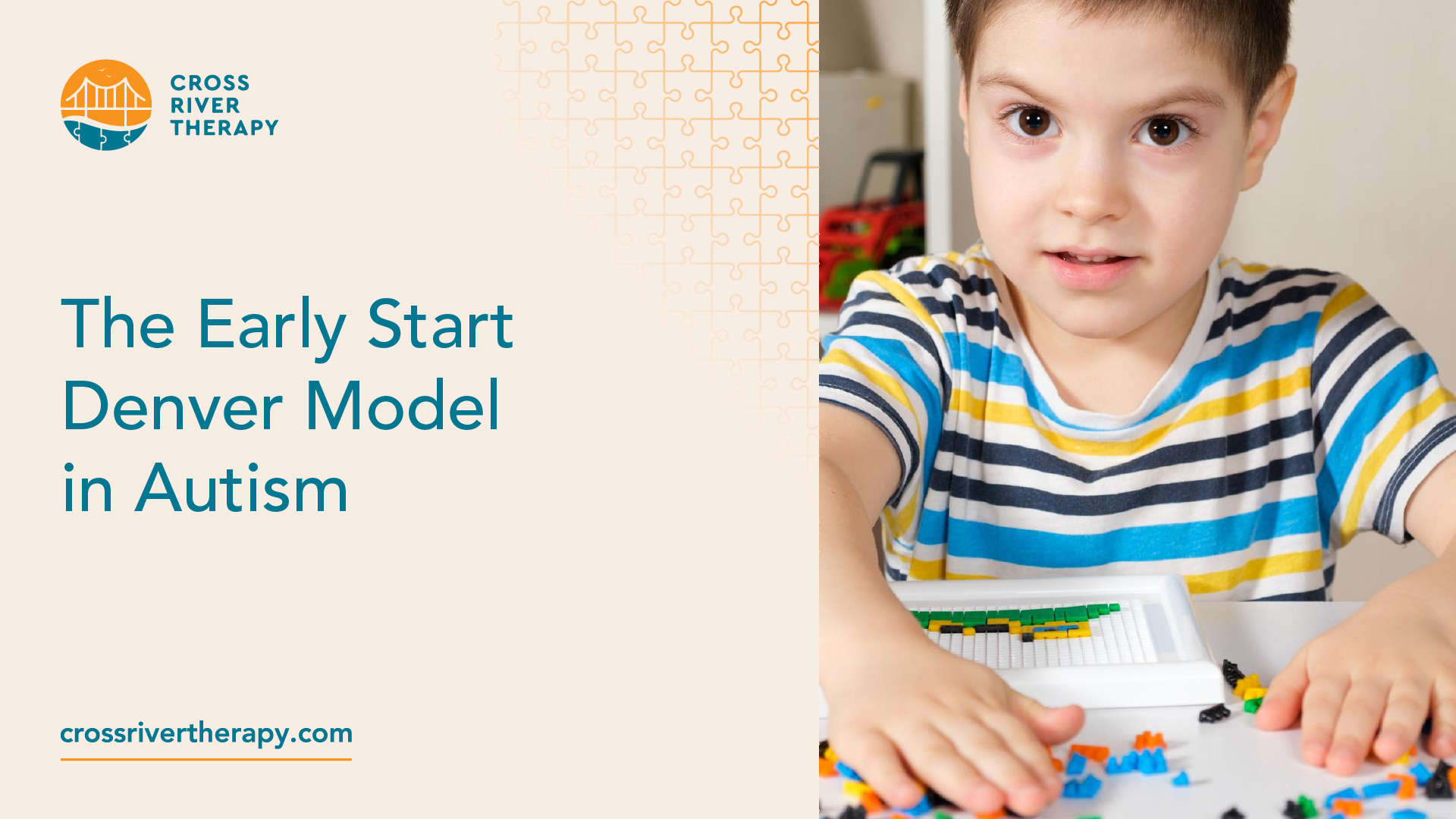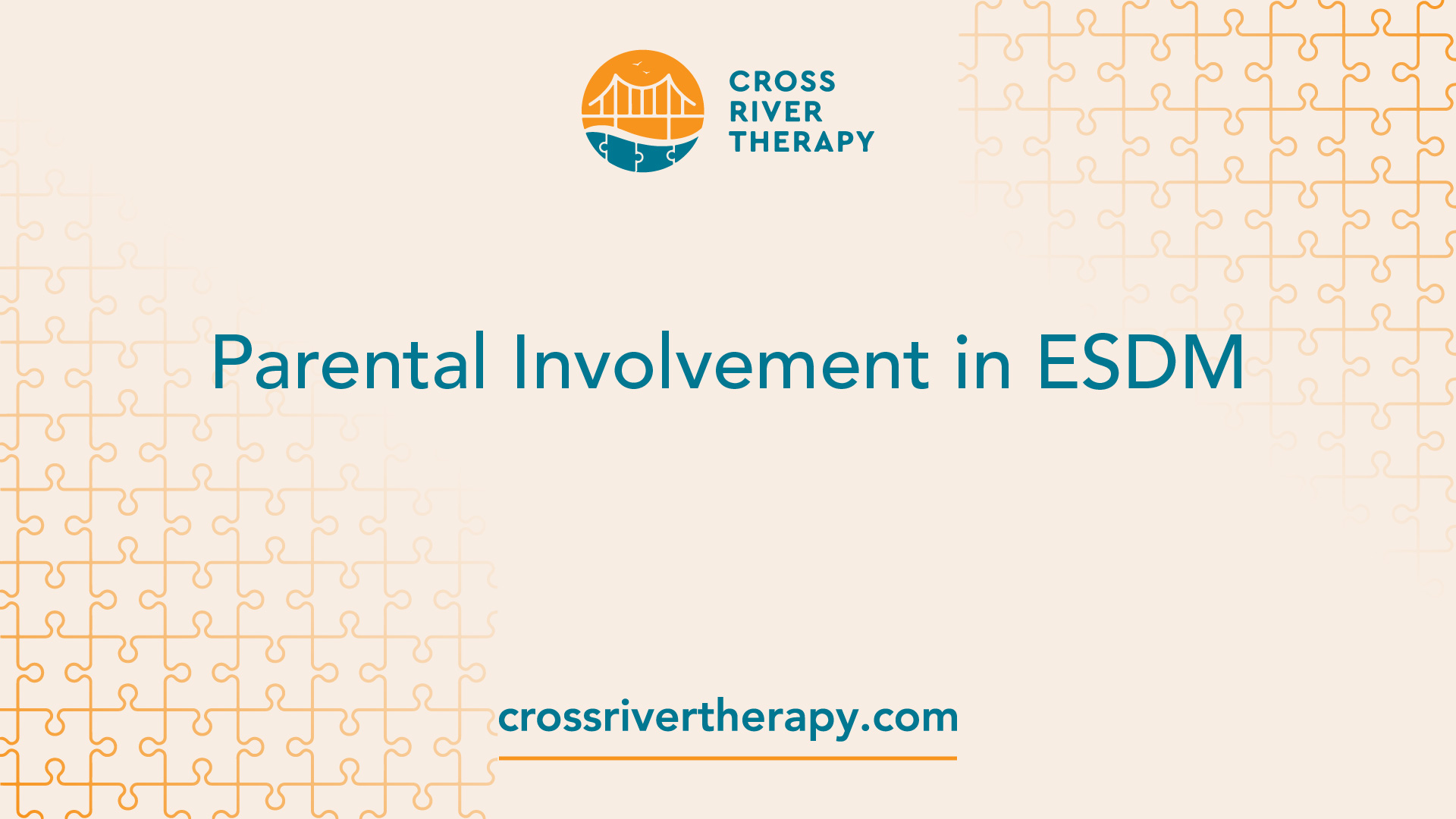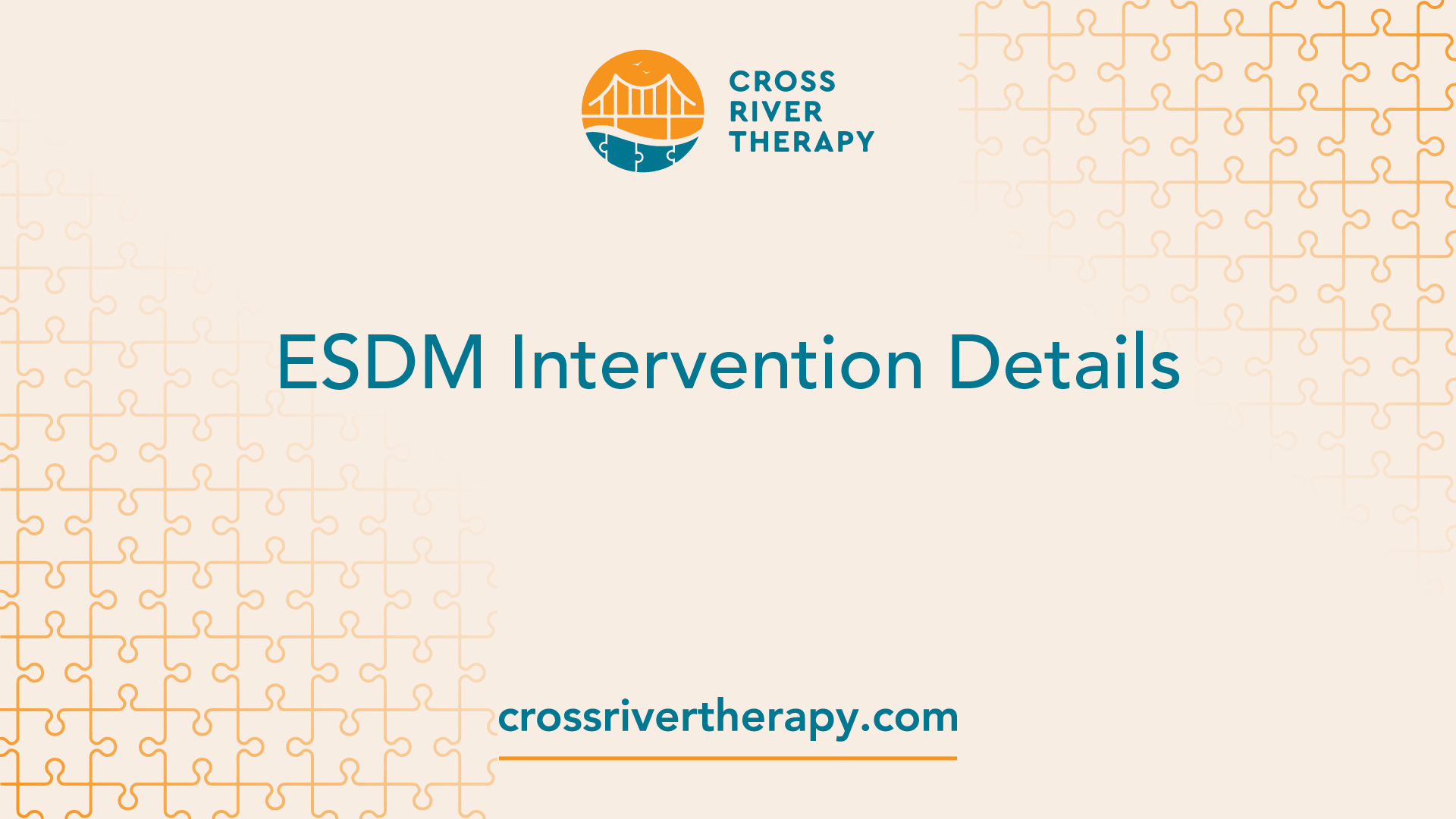The Early Start Denver Model in Autism
Explore the impact of the Early Start Denver Model in autism, a promising therapy for your child's triumph.
Understanding ESDM Therapy
The Early Start Denver Model (ESDM) is a comprehensive early intervention program for Autism Spectrum Disorder (ASD). It aims to increase the rates of development in all domains for children with ASD and decrease the symptoms of autism that impair children's ability to learn from everyday experiences and interactions [1].

Benefits of ESDM Therapy
Over a dozen studies have demonstrated the benefits of ESDM as an early intervention for autism among children as young as 18 months. These studies included children across a wide range of learning abilities. The ESDM is one of the few comprehensive early intervention programs for ASD and has been identified as a promising and cost-effective intervention, focusing on autism-specific impairments and teaching skills across nine developmental domains [3].
The benefits of ESDM therapy include improved learning and language abilities, adaptive behavior, and reduced symptoms of autism. Furthermore, research using brain scans suggests that ESDM improves brain activity associated with social and communication skills. For instance, ESDM's focus on boosting children's social-emotional, cognitive, and language abilities can lead to improved social interaction, a key challenge often observed in behaviors such as autism and staring.
Settings for ESDM Therapy
ESDM therapy can be used in various settings, offering flexibility and convenience for families. This includes at home, at a clinic, or in school. Therapy is provided in both group settings and one-on-one sessions, making it versatile for different environments and preferences.
The adaptability of the ESDM approach ensures that the therapeutic support can be integrated into the child's daily life, making it a part of their routine rather than an isolated activity. This integration helps to reinforce the skills learned during therapy sessions, providing a consistent and supportive learning environment for the child.
In the journey of understanding and managing autism, exploring various interventions such as ESDM and stem cell therapy can empower families to find the most effective methods for their unique circumstances. ESDM's proven benefits and flexible approach make it a valuable tool in supporting the growth and development of children with autism.
Parental Involvement in ESDM
The role of parental involvement in the Early Start Denver Model (ESDM) for autism cannot be overstated. This involvement is integral to the successful implementation of ESDM therapy and contributes immensely to the overall progress and development of the child.

Importance of Parental Engagement
Parent engagement is a crucial component of the ESDM program. Therapists often model strategies for families and explain the techniques used during therapy, which can then be practiced at home. This emphasizes the importance of parental engagement in the therapy process as it reinforces the therapeutic interventions outside the therapy setting and consolidates learning.
According to a study published by NCBI, parent-implemented Early Start Denver Model (P-ESDM) has shown positive child-parent-related outcomes. Parents successfully implemented intervention techniques, resulting in improvements in child outcomes. However, the study also revealed that the standard benchmark for acceptable fidelity (at least 80%) was being achieved in just half of the studies.
Additionally, it was found that P-ESDM training sessions typically ranged from 1 to 2 hours per week over a period of 10-13 weeks, with some extending to 26 weeks. The intensity and duration of the intervention play a crucial role in the effectiveness of the program.
Medicaid Coverage for ESDM
For families in the United States, the financial aspect of ESDM therapy is an important consideration. Thankfully, Medicaid plans must cover treatments deemed medically necessary for children under the age of 21. If a doctor recommends ESDM as a medically necessary treatment for a child, Medicaid is required to cover the cost [2]. Some young children may receive ESDM through their Early Intervention program, which is offered in each state to children under age 3 who are not growing and developing at the same pace as others.
In summary, parent engagement in the implementation of ESDM is crucial to achieving positive outcomes for children with autism. Not only does this involvement reinforce and extend the benefits of therapy, but it also fosters a supportive and nurturing environment for the child at home. With financial support available through Medicaid, ESDM becomes a more accessible therapeutic option for families.
ESDM Intervention Details
To fully understand the effectiveness and potential benefits of the Early Start Denver Model in autism, it's crucial to delve into how the intervention is delivered and what its key components are.

Delivery of ESDM Therapy
ESDM therapy can be used in various settings, making it a versatile approach for different environments and preferences. It can be provided at home, in a clinic, or in school. Furthermore, therapy is delivered in both group settings and one-on-one sessions, allowing for flexibility based on the child's needs and comfort levels.
The ESDM intervention itself can be provided by trained interventionists and parents during natural play and daily routines, making it a part of the child's everyday life. This integration into daily activities makes the therapy less intrusive and more effective as it becomes a part of the child's natural environment.
Key Components of ESDM
The ESDM is an amalgamation of a developmental, play-based, relationship-based approach combined with the principles of applied behavior analysis. This fusion creates an integrated whole that is both individualized and manualized.
One of the key elements of this approach is how it involves using sensitive, responsive strategies within everyday learning opportunities. These opportunities are provided by parents, family members, and other caregivers to support child learning. It's a naturalistic, developmental-behavioral intervention (NDBI) that allows for step-wise alterations in a teaching approach based on an individual child's learning profiles to assure maximum progress on learning objectives.
The ESDM focuses on autism-specific impairments and teaching skills across nine developmental domains. It's recognized as one of the few comprehensive early intervention programs for Autism Spectrum Disorder (ASD) and has been identified as a promising and cost-effective intervention.
Understanding these key components and the delivery of the ESDM therapy can help parents and caregivers make an informed decision about whether to pursue this approach for their child's autism intervention. For more information on autism and its various aspects, feel free to explore more articles such as autism and staring, proprioception and autism, and is stem cell therapy for autism fda approved?.
Effectiveness of ESDM
The Early Start Denver Model (ESDM) has been recognized for its potential in improving learning, language abilities, adaptive behavior, and reducing the symptoms of autism in children. The effectiveness of this therapeutic model is supported by various research studies, with findings pointing towards significant improvements in cognitive and language abilities of children undergoing ESDM intervention.
Research Findings on ESDM
Numerous studies have been conducted to evaluate the effectiveness of the Early Start Denver Model in autism intervention. A notable study published by the NCBI shows significant improvements in both cognition (g = 0.412) and language (g = 0.408) for children with autism spectrum disorder who received the ESDM intervention. This resulted in an aggregated effect size of 0.357 (p = 0.024), favoring participants who received the ESDM over those in control groups.
However, it should be noted that the same study did not observe significant effects for measures of autism symptomology, adaptive behavior, social communication, or restrictive and repetitive behaviors. This highlights the importance of comprehensive treatment plans that address multiple facets of autism, complementing the ESDM with other therapeutic interventions as needed.
Impact on Brain Activity
In addition to cognitive and language improvements, the Early Start Denver Model has also been associated with changes in brain activity. Research using brain scans suggests that ESDM improves brain activity associated with social and communication skills, as stated by Autism Speaks. Studies demonstrate improvements in brain wave tests (EEG), particularly when viewing faces and objects, pointing towards the positive impact of ESDM on brain function in children with autism.
These findings reinforce the potential of ESDM as a beneficial therapeutic model for autism intervention, particularly in enhancing cognitive and language abilities, and improving brain activity associated with social and communication skills. As research progresses, further understanding of the full spectrum of benefits offered by the Early Start Denver Model in autism treatment will continue to unfold.
Contrasting ESDM with ABA
While both the Early Start Denver Model (ESDM) and Applied Behavior Analysis (ABA) are commonly used therapies for autism, they differ in their focus, approach, and therapeutic techniques. Understanding these differences can help parents make informed decisions about the best therapy for their child.
Focus and Approach in ESDM
The ESDM is a child-centric form of ABA therapy that utilizes children's natural interests to teach foundational skills like communication and social skills [4]. This approach emphasizes maintaining a positive affect (warm tone of voice, facial expression, and body language) during interactions with children to build relationships and attachment. This is different from ABA where positive affect is typically offered only after the desired behavior has been exhibited.
In ESDM, therapists focus on responsivity, sensitivity, and emotion coaching to manage unwanted behaviors. They aim to understand the underlying communication, meet the child's needs, and reduce future occurrences of unwanted behaviors. This contrasts with the ABA approach where unwanted behaviors are often ignored [5].
Differences in Therapeutic Techniques
One of the key differences between ESDM and ABA lies in the prompting approach. ESDM uses a 'least to most' prompting approach, providing the least amount of support initially and gradually increasing support to maximize the child's understanding, independence, and confidence. ABA, on the other hand, typically uses a 'most to least' prompting approach, starting with full prompts and fading them over time [5].
Furthermore, ESDM is a manualized practice with a system to measure treatment fidelity. Providers often prioritize ESDM due to its effectiveness in improving language skills, cognition, social skills, adaptive skills, and behavior in children with autism.
In summary, while both ESDM and ABA are effective therapies for autism, their approaches and techniques vary. Parents should consider these differences, along with their child's unique needs and preferences, when choosing a therapy. For more information on specific aspects of autism, explore our articles on staring in autism and proprioception and autism.
ESDM for Young Learners
The Early Start Denver Model (ESDM) is known for its focus on young learners typically under the age of 5. It's a comprehensive therapy program designed especially for children with autism. In this section, we'll discuss the key features of ESDM therapy and share some success stories that highlight the impact of this approach.
Features of ESDM Therapy
The ESDM combines concepts of applied behavior analysis (ABA) and developmental science. It was developed by Sally Rogers and Geraldine Dawson and has been recognized as a Top Medical Breakthrough by Time Magazine in 2012.
One of the key features of ESDM therapy is its child-centric approach. It uses children's natural interests to teach foundational skills like communication and social skills. This makes ESDM a more naturalistic form of ABA therapy, focusing on what's fun and interesting for the child.
Another distinct feature is its system to measure treatment fidelity. Providers often prioritize the ESDM due to its effectiveness in improving language skills, cognition, social skills, adaptive skills, and behavior in children with autism.
Success Stories and Recognition
The effectiveness of the early start denver model in autism treatment is well-documented. Studies have shown that children receiving the ESDM demonstrated greater improvements in cognitive and adaptive behavior measures compared to those receiving community care.
Moreover, a follow-up study confirmed that children receiving ESDM showed improvements in language outcomes relative to those in community care. A 2020 study further revealed that naturalistic approaches like ESDM were as effective as traditional ABA in teaching skills to toddlers with autism.
Additionally, improvements in brain activity, such as changes in brain wave tests (EEG) when viewing faces and objects, have been observed in research studies on ESDM. These findings underscore the potential of ESDM in shaping the developmental trajectory of children with autism.
These success stories underline the potential of ESDM in improving the lives of children with autism and their families. For parents seeking to understand more about autism and its various aspects, you can explore topics such as autism and staring, proprioception and autism, and stem cell therapy for autism in our other articles.
References
[2]:
[3]:
[4]:
[5]:



